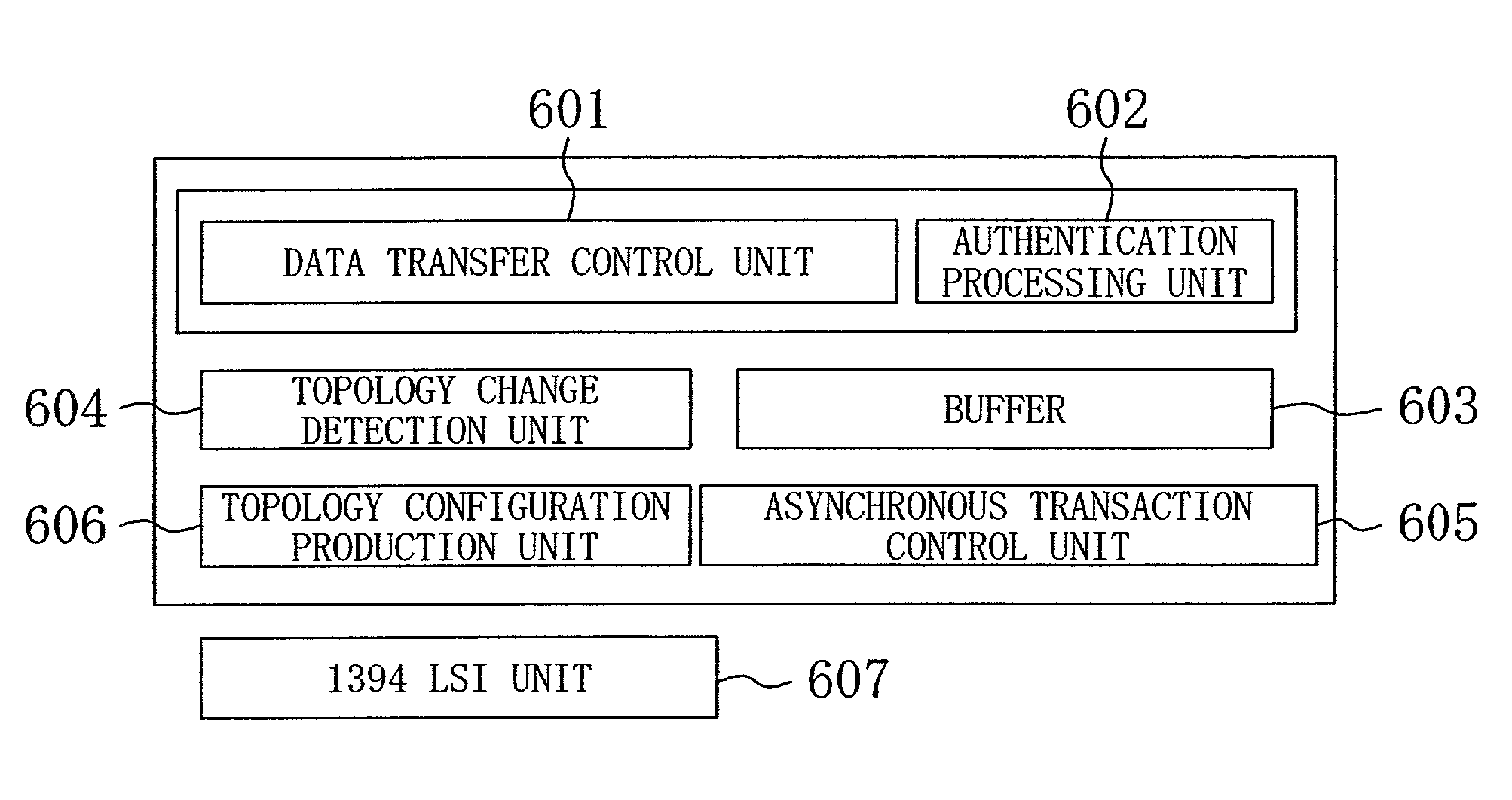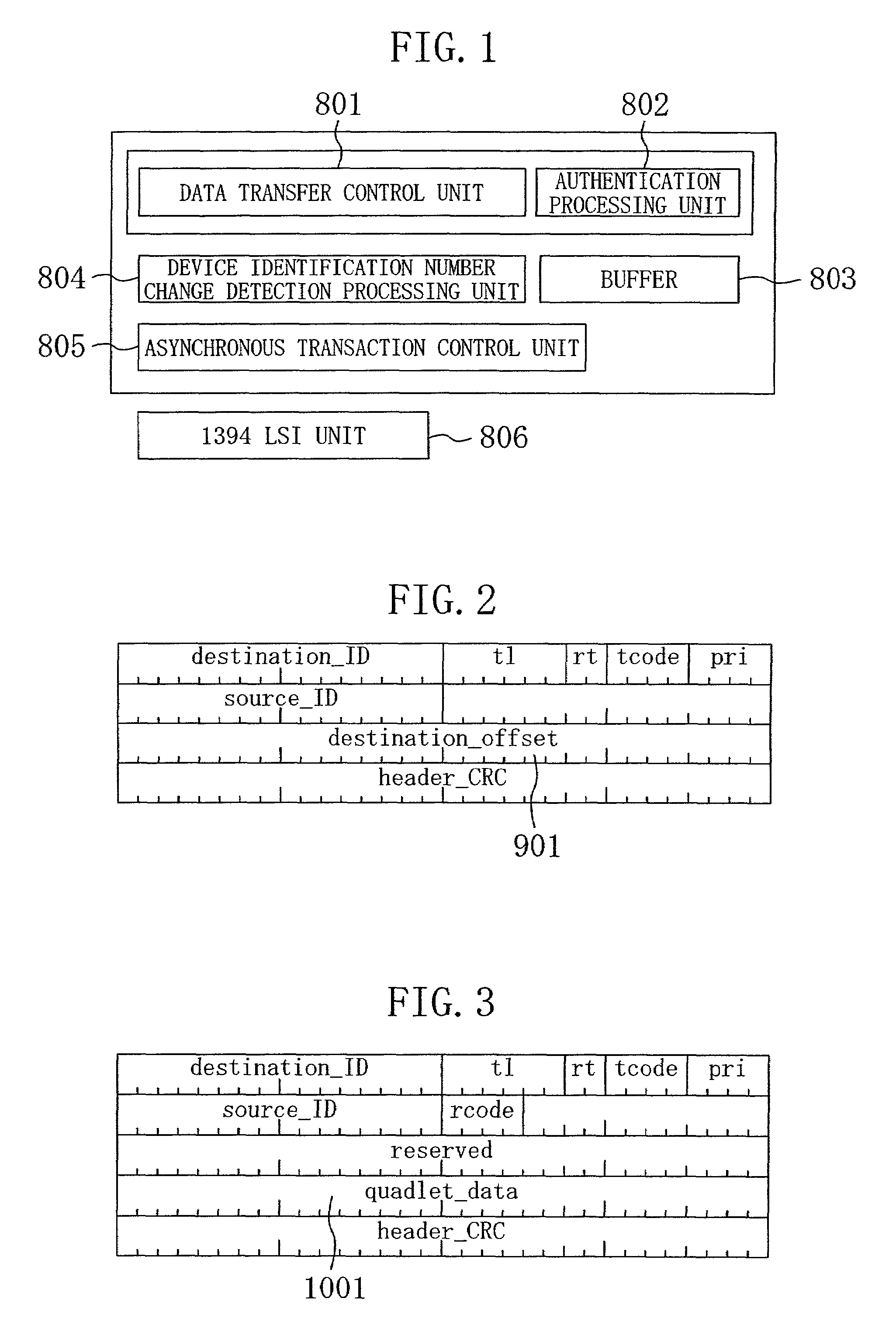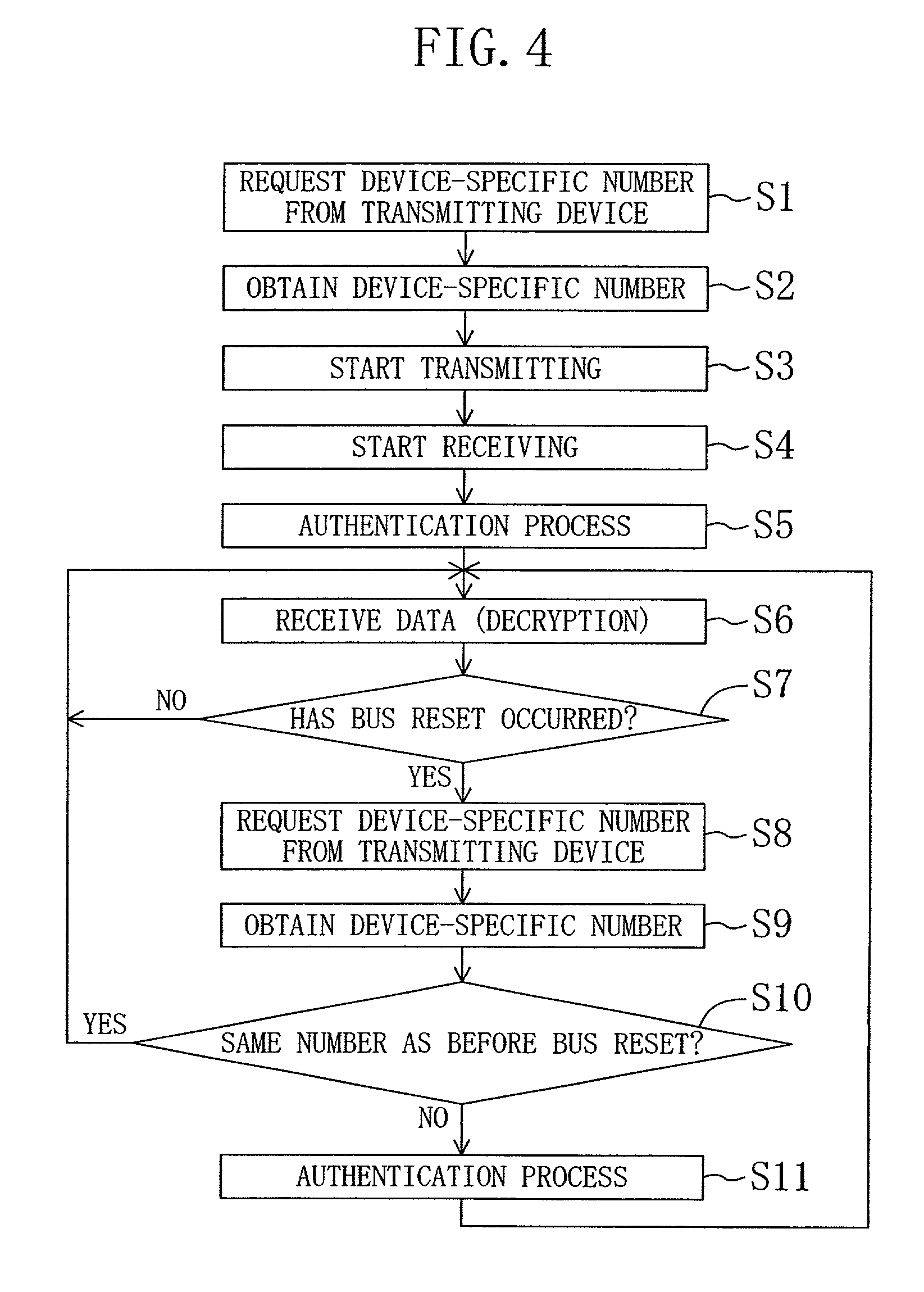Data transmit/receive device and data transmit/receive method
a data transmit/receive device and data technology, applied in the field of data transmit/receive device and data transmit/receive method, can solve the problems of inability to suitably reproduce the received data, inability to correctly decrypt encrypted data, and complex topology information production process, so as to facilitate the reception of original data, less processing, and less storage capacity
- Summary
- Abstract
- Description
- Claims
- Application Information
AI Technical Summary
Benefits of technology
Problems solved by technology
Method used
Image
Examples
first embodiment
[0044]FIG. 1 shows the overall configuration of a data transmit / receive device of the first embodiment. In FIG. 1, numeral 806 denotes a 1394 LSI unit for transmitting / receiving packet data over a 1394 bus. Numeral 805 denotes an asynchronous transaction control unit for controlling communication using asynchronous packets. Numeral 804 denotes a device identification number change detection processing unit, which requests device-specific numbers as device-specific information, and based on the obtained device-specific numbers, detects changes in the transmitting device that is the communication partner of the receiving device, before and after a bus reset. Numeral 803 denotes a buffer for holding device-specific information that is necessary for the detection of changes of the transmitting device that is the communication partner. Numeral 801 denotes a data transfer control unit for controlling the transfer of data. Numeral 802 denotes an authentication processing unit for device au...
second embodiment
[0053]The following is an explanation of a second embodiment of the present invention. This embodiment is considered the best mode for carrying out the present invention. The overall configuration of the data transmit / receive device of this embodiment is the same as in FIG. 1, so that further illustrations and explanations have been omitted. However, the operation of this embodiment is different from that of the first embodiment. The following explains the data transmit / receive method of this embodiment, with reference to the flowchart in FIG. 6.
[0054]In Steps S1 and S2 of FIG. 6, the device-specific numbers of the devices are read in (function for reading device-specific numbers). That is to say, before the receiving device starts to receive asynchronous packet data from a transmitting device that is transmitting data on the channel that the receiving device wants to receive, in Step S1 the receiving device requests the device-specific number from the transmitting device with the q...
third embodiment
[0065]The following is an explanation of the third embodiment. This embodiment illustrates a case where the data from the transmitting device are not encrypted.
[0066]FIG. 9 is a flowchart showing the data transmit / receive method of this embodiment. The overall configuration of the data transmit / receive device of this embodiment is the same as in FIG. 1, so that further illustrations and explanations have been omitted. The flowchart in FIG. 9 is basically the same as the flowchart of the second embodiment shown in FIG. 6, but the authentication processes of Step S5 and Step S25 of FIG. 6 have been omitted. The rest of the data transmit / receive method is the same as in the second embodiment, so that further explanations of the flowchart in FIG. 9 have been omitted.
[0067]Explaining the data transmit / receive method of this embodiment with FIG. 7 and FIG. 8, if a TV set B is connected to the bus 10 while the video deck A receives unencrypted data from the TV set A on a channel with the n...
PUM
 Login to View More
Login to View More Abstract
Description
Claims
Application Information
 Login to View More
Login to View More - R&D
- Intellectual Property
- Life Sciences
- Materials
- Tech Scout
- Unparalleled Data Quality
- Higher Quality Content
- 60% Fewer Hallucinations
Browse by: Latest US Patents, China's latest patents, Technical Efficacy Thesaurus, Application Domain, Technology Topic, Popular Technical Reports.
© 2025 PatSnap. All rights reserved.Legal|Privacy policy|Modern Slavery Act Transparency Statement|Sitemap|About US| Contact US: help@patsnap.com



